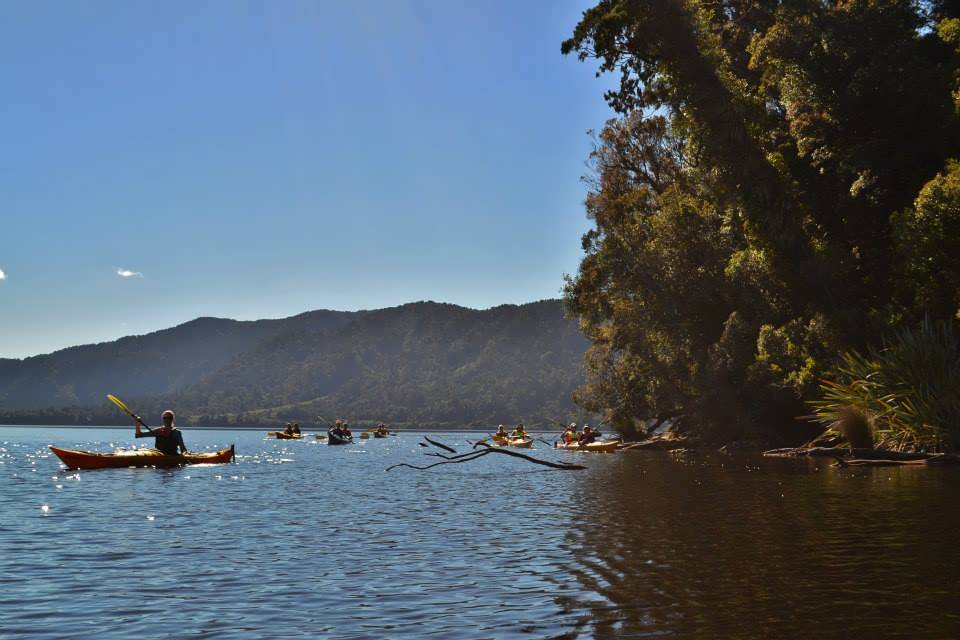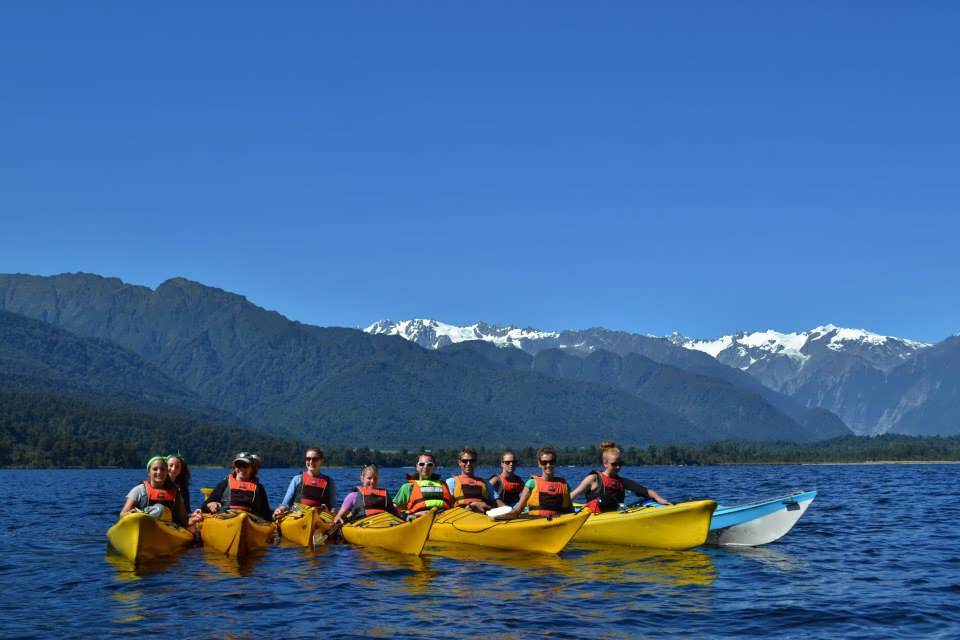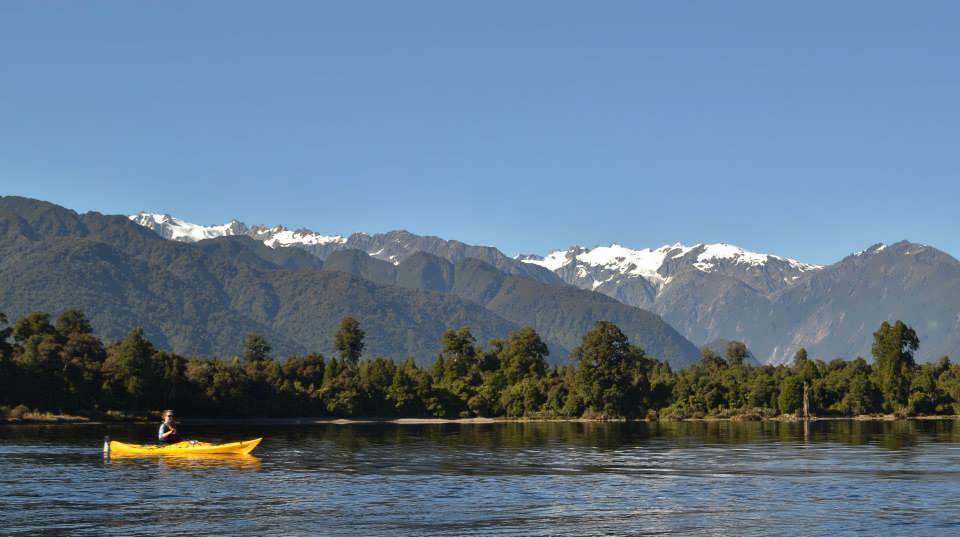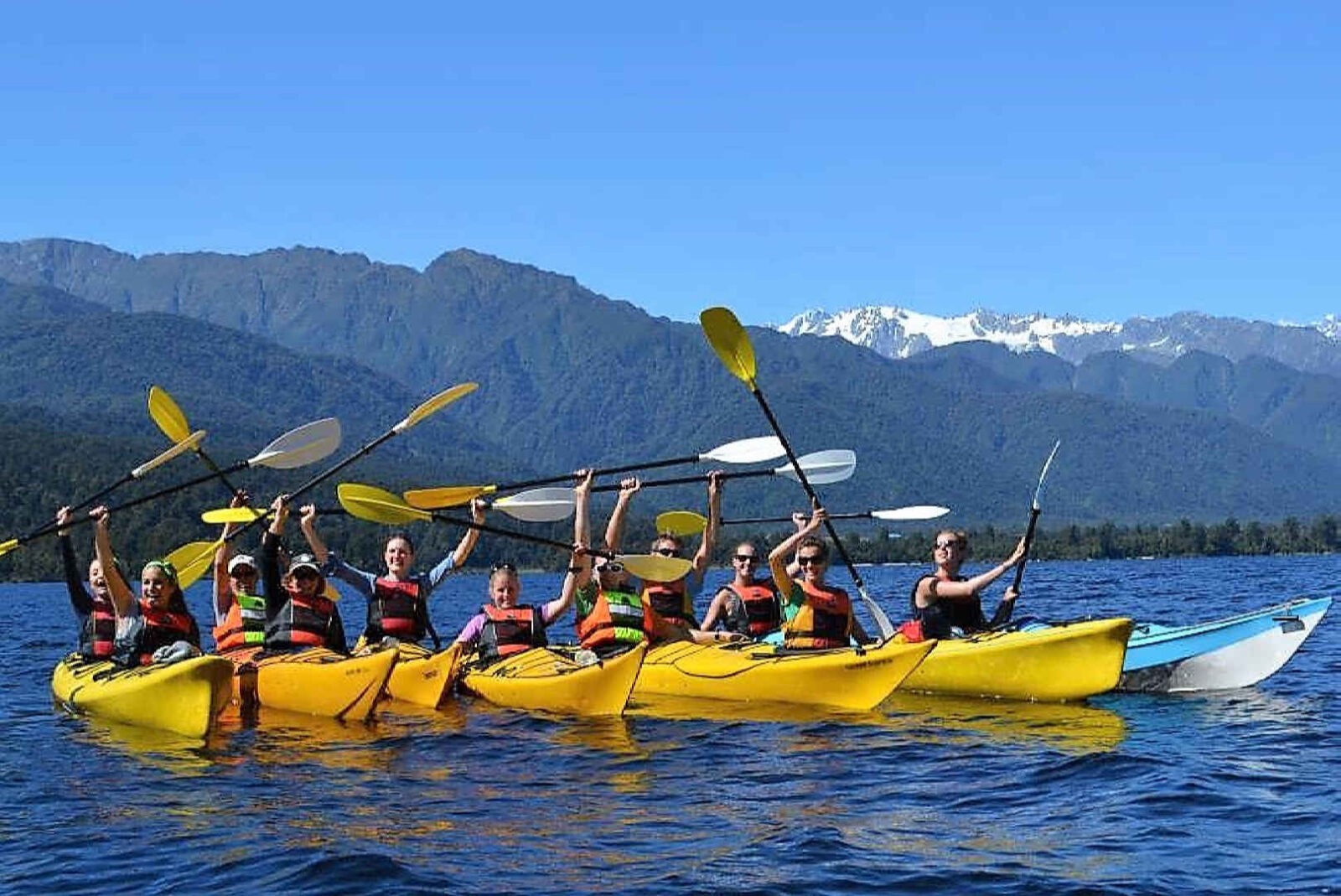It is said that Franz Josef receives more rain annually than the Amazon rainforest. But today the weather gods were feeling generous as the sun shone brightly in the cloudless azure blue sky. It was going to be a perfect day for my Franz Josef kayaking expedition.
Franz Josef is a must-see stop on New Zealand‘s well-trodden tourist trail. A picturesque town set amid the dramatic backdrop of the Southern Alps, the majority of people come here to take the opportunity to catch a helicopter and hike up the famous glacier: a once-in-a-lifetime experience for most. But there is more to the place than ice.
Just a short drive away lies Lake Mapourika, a serene body of water which, on a clear, still day, acts as the perfect mirror, echoing the mighty snow-capped mountains in its depths. Glacier Country Kayaks, a local company set up by kayaking enthusiasts, offers the chance to explore some more of this region’s rich natural beauty, which you can only reach by water.
We were picked up in a minivan by the chatty and ebullient Tyler, a man who clearly relishes his job: no dull day in the office for him. After packing our belongings in a watertight bag, grabbing a paddle and donning our lifejackets, we were introduced to our banana yellow kayaks – some tandem, some for solo adventurers. Being a total kayaking novice, it was with some trepidation that I – no doubt elegantly – threaded my legs into the narrow hull of one of the solo boats. We tested out the left and right foot peddles to control the rudder. I didn’t even know kayaks had rudders. Slightly nervous, I was having visions that, without someone else in the boat to help me propel it along, I’d soon be left behind, panting and tired, with wobbling arms, calling out to the others to carry on without me.
So I bravely set off. As Tyler was ensuring that everyone was ready and fully briefed, we were encouraged to head out into the lake and check out some of the plant life around the edge. Gradually getting to grips with the steering, I found it easier than expected. To be out on this vast lake, just you and a paddle in a boat, it feels very special. It can be rare to experience true stillness and silence in this busy, bustling world of ours, and out here all you can hear is the sound of your blades hitting the water. With the sun warming my skin, I glanced over at the panoramic view of the white-topped mountains housing the glacier I had hiked up the previous day. I smiled and felt very fortunate indeed.
Tyler then invited us to paddle across to the other side of the lake. I found I could navigate with ease and my arms, back and shoulders were doing a fine job with no sign of flaking out. Here he told us a little about the area and its history: how the lake was created by the glacier’s icy retreat around 14,000 years ago, and how its position protected by the mountains means it often misses out on the town’s legendary rainfall. We made our way around the edge of the lake, as gorgeous shiny dragonflies danced across our boats. Far from being the one left behind as I feared, I was actually way at the front, relishing my new-found kayaking skill.
Around the corner, we sailed into the mouth of Echo Valley, so named because if you shout loud enough, you will hear your voice calling back to you over and over, as it bounces between the ancient forested slopes. So of course there were plenty of whoops, hollers and tribal calls from the members of our group.
The next leg of our trip was through a small tributary, into the heart of the Ōkārito Kiwi Sanctuary. At its entrance my kayak got caught in some tangled plants floating on the water, but two girls in a tandem kayak helpfully pulled me out of peril, as I held onto their paddle. The narrow, winding tributary tested our steering skills to the max, but we all made it through and gathered together deep in the forest A member of the sanctuary team explained that the sanctuary, which covers 11,000 hectares, was created to protect the rowi species of kiwi and encourage their breeding in this safe environment. It’s a crucial task as there are only around 375 of these birds remaining in the wild, placing them as one of New Zealand’s most critically threatened native species.
As we made our way back to the open expanse of the lake, we all posed for photos against that almighty Alpine backdrop and enjoyed our last remaining moments gliding through the water.
With its glacier that has carved through the landscape for thousands of years, Franz Josef is an outstanding region of New Zealand, and I was happy to have explored the peace and serenity of its beautiful nature in my bright yellow kayak.
Now, read more about my epic adventures on New Zealand’s South Island.






No Comments Yet